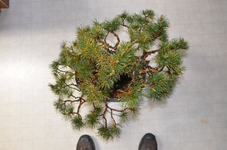Tntthunder
Yamadori
My junipers are turning this lighter colour. They're Chinese juniper "Blaaws", is this normal now that we are comingi into late summer/autumn? Last year they didn't change colour all winter and were a deep green, same with all this year but now they're changing to this light bluey/green colour.
I have changed the fertiliser, I went from a chicken manure pellet 6-2-2 to a synthetic slow release granular with all the micro nutrients that is 9-4-12
Could this be the reason or something else? They feel quite healthy otherwise.
The green of the new growth was basically my whole tree colour. I have two junipers and they're both doing the same thing.
I have changed the fertiliser, I went from a chicken manure pellet 6-2-2 to a synthetic slow release granular with all the micro nutrients that is 9-4-12
Could this be the reason or something else? They feel quite healthy otherwise.
The green of the new growth was basically my whole tree colour. I have two junipers and they're both doing the same thing.





